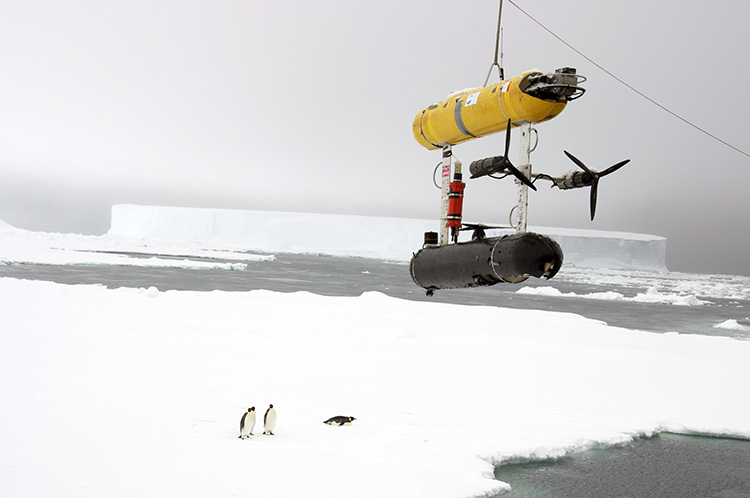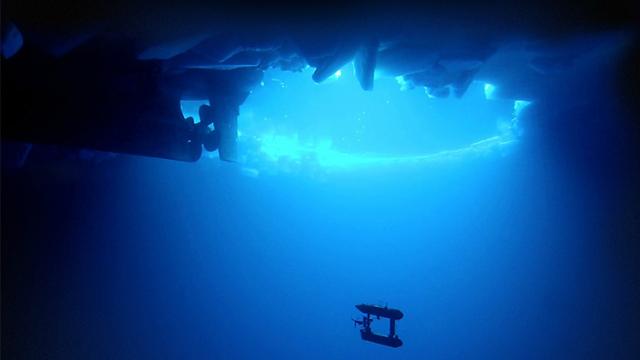The size and thickness of the Antarctic ice sheet acts as a barometer for global health but figuring out exactly how much frozen water is sitting atop the southern pole is difficult. Satellite results are often obscured by layers of snow and ice core boring requires people to brave the extreme cold to collect them. But with this self-guided sonar sub, researchers can collect accurate ice information without ever getting off the boat.
The sub, dubbed the SeaBED, is the brainchild of researchers at Massachusetts’ Woods Hole Oceanographic Institution (WHOI). Its twin-hull design measures about 2m long and weighs about 200kg. Operating at a depth of 20m to 30m, the SeaBED blasts its upward facing sonar into the ice’s underside as it slowly trawls along underneath.
“Putting an AUV together to map the underside of sea ice is challenging from a software, navigation and acoustic communications standpoint,” Hanumant Singh, an engineering scientist at the WHOI said in a press statement.
“SeaBED’s manoeuvrability and stability made it ideal for this application where we were doing detailed floe-scale mapping and deploying, as well as recovering in close-packed ice conditions. It would have been tough to do many of the missions we did, especially under the conditions we encountered, with some of the larger vehicles.”

The data that SeaBED collects is extremely accurate as its readings are not confounded by layers of snow — in some spots during its most recent survey, the SeaBED found ice sheets up to 17m thicker than previously believed. But its findings are very limited in scope, having been compared to the view through a microscope. As such SeaBED’s data is being used to supplement existing airborne, satellite and core data to help provide researchers a more complete understanding of Antarctica’s ice.
“The AUV missions have given us a real insight into the nature of Antarctic sea ice — like looking through a microscope. We can now measure ice in far greater detail and were excited to measure ice up to 17m thick,” co-author Jeremy Wilkinson, from the British Antarctic Survey, said in a press statement. The WHOI research team hopes to follow the SeaBED’s initial success with a large-scale survey effort in the coming months and years that can be compared against existing aircraft and satellite observations. [WHOI via Daily Mail]
Picture: WHOI
